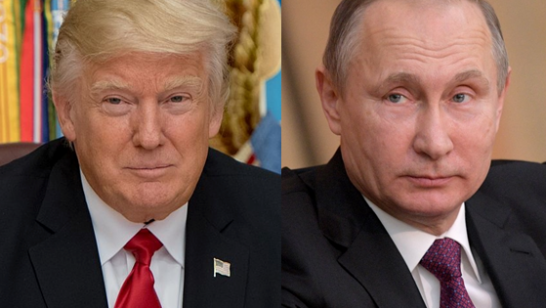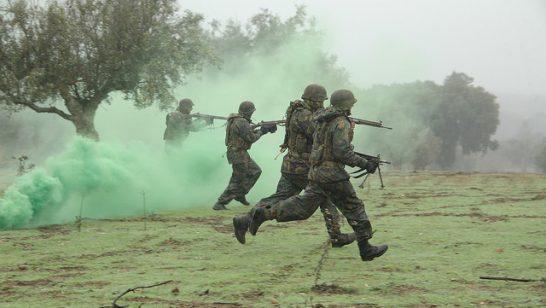
The political context of Zapad-2017
On 14 September 2017, the joint Russia–Belarus strategic military exercises Zapad–2017 (West–2017) began. The previous Zapad exercises were conducted in 2013 in what now seems like a different political era: before the Crimean annexation, the war in Donbas and the Russia–West confrontation. This is why the current exercises have attracted widespread international attention and anxiety in Europe as to their purpose and outcome.
The political logic of Zapad exercises
In post-Soviet history, the Zapad exercises were first conducted in June 1999, soon after the NATO operation against the regime of Slobodan Milosevic in Yugoslavia. The NATO bombing was a political shock to the Russian authorities. In their view, the similarities between Russia and Yugoslavia meant that the Yugoslavian scenario could be at some point played out against them.
Consequently, Moscow started to re-learn the language of military power, with the Zapad–99 exercises preparing the army for Russia’s new environment. However, even though Russia had the ability to wage nuclear conflict with NATO, the miserable reality of Russian conventional troops became evident during those exercises and soon after, when Islamists tried to establish a North Caucasian caliphate in Dagestan and Chechnya. The transition of political power from Boris Yeltsin to Vladimir Putin also played a part. Thus, there was no basis for a more assertive foreign policy at that time. Moreover, economic growth and oil prices gave Moscow additional tools in international arena. Eight years later, the unsustainability of Russia’s political and economic system was more evident despite the flow of petrodollars.
However, the Kremlin’s approach to international relations at the time did not bring the results it wanted nor expected. Nor did it guarantee immunity for the corrupt Russian political elite and their assets in the West. The ruling class was afraid of losing its political and economic assets and nervous of the artificial anti-Russian revolutions in Georgia, Ukraine, and Kyrgyzstan. The end of Saddam Hussein’s regime in Iraq also served as a further wake-up call. The loss of confidence among the Russian political elite grew and was reflected in Putin’s speech at the 2007 Munich Security Conference.
Russia then increased its pressure on Georgia and prepared military operations against the country to obstruct its pro-Western political and economic course. However the Russian–Georgian war of August 2008 brought another shock when the United States Navy was deployed to the Black Sea as a warning against a further Russian offensive. During the Georgian campaign, the Russians also realized the ineffectiveness of their armed forces in spite of the increases to the defence budget since 2000. The ghost of the Yugoslav scenario appeared again.
In response, Russia undertook a comprehensive military reform from 2008–2012 to improve the capabilities of its armed forces. Russia also began new programme of rearmament for the years 2011–2020. This amounted to injecting hundreds of billions dollars into its military forces. The huge Zapad exercises with Belarus conducted in 2009 and 2013 served to test the advances of this reform. This was intended to preserve Russia’s dominance over the post-Soviet states and enhance its bargaining position with the West. The Zapad-2017 military exercise is therefore based on Moscow’s long-term political assessment to external developments.
Immediate goals of Zapad-2017
The main problem of the current exercises is the uncertainty of their scale. Zapad-2017 is supposedly synchronized with other military exercises on Russian territory with limited aims. However it will de facto be large strategic exercises involving dozens of thousands of troops. This does not mean that Russia is going to annex Belarus, conquer Ukraine or invade the Baltic States. But it does mean that Russia is trying to prepare and train its troops for different options. Although the probability of one of these three scenarios being put into action is low, it is still above zero.
Any military campaign needs a political and diplomatic plan. Russia’s military activity is no exception. The war in Georgia in 2008, the war in Ukraine since 2014, and the campaign in Syria since 2015 could be understood in the context of the Kremlin’s political goals and estimations of threats to Russia. At the same time, Russia traditionally organizes its military campaigns abroad to assistant populations living there, as was the case with the Polish and Finnish campaigns in 1939, Afghanistan in 1979, as well as its modern wars.
Russia would of course react against any uncontrolled transformation and/or democratization of Alexander Lukashenko’s regime in Belarus. However, there is currently no reason for Moscow to start a war in Belarus, as there are still no pro-Russian Belarusian political forces which would legitimate such a Russian military campaign. Similarly, a full-scale military offense against Ukraine would be a huge cost for Russia. The Kremlin would prefer waiting for another favorable moment to bend Kiev to its will by other means, even if it takes years. Moreover, Russia can keep relatively calm now, as reforms in Ukraine are stalled. Concerning the Baltic States, Moscow would need a reasonable casus belli and favorable international conditions for a military campaign that would allow Russia to gain from such a war.
What that means is that the (immediate) goals of the Zapad-2017 exercises are not to begin a military conflict along the Russia’s western border. The exercises are intended to make Russia’s neighbors insecure of their future and thus more compliant in relations with the Kremlin. However, Russia’s readiness to fight should be assessed correctly, and political aspects of the exercises should be analysed. There are only a few tools in the Kremlin’s hands, except the army, to maintain its political power at home. So, the Zapad-2017 exercises are aimed at keeping the Russian army ready to react against the main fear of the Russian ruling class. That fear is the repetition of the fates of Milosevic, Hussein or Qaddafi.
The opinions articulated above represent the views of the author(s), and do not necessarily reflect the position of the European Leadership Network or any of its members. The ELN’s aim is to encourage debates that will help develop Europe’s capacity to address the pressing foreign, defence, and security challenges of our time.



